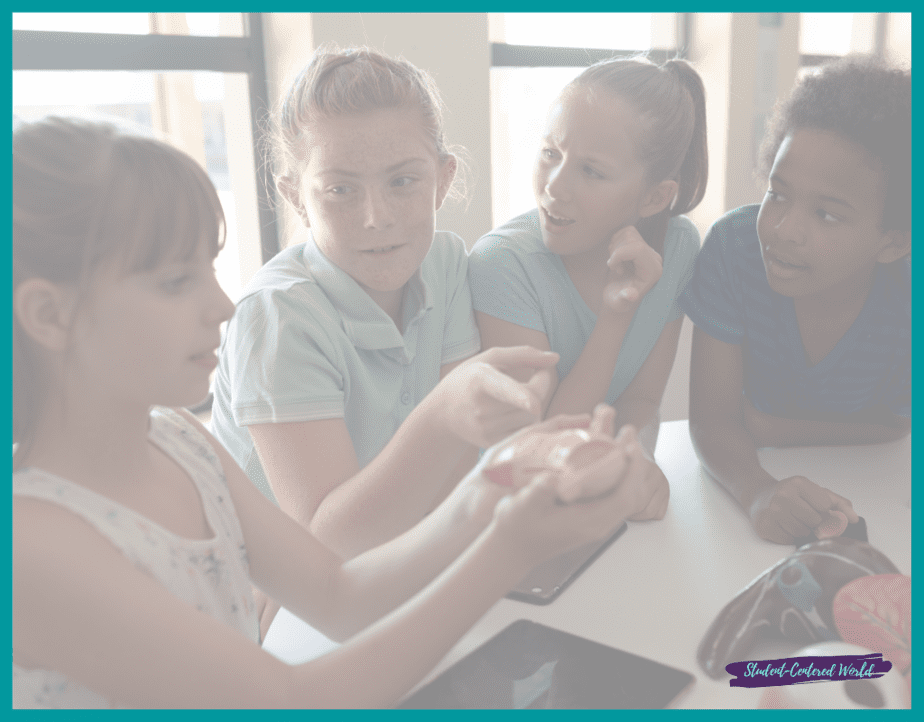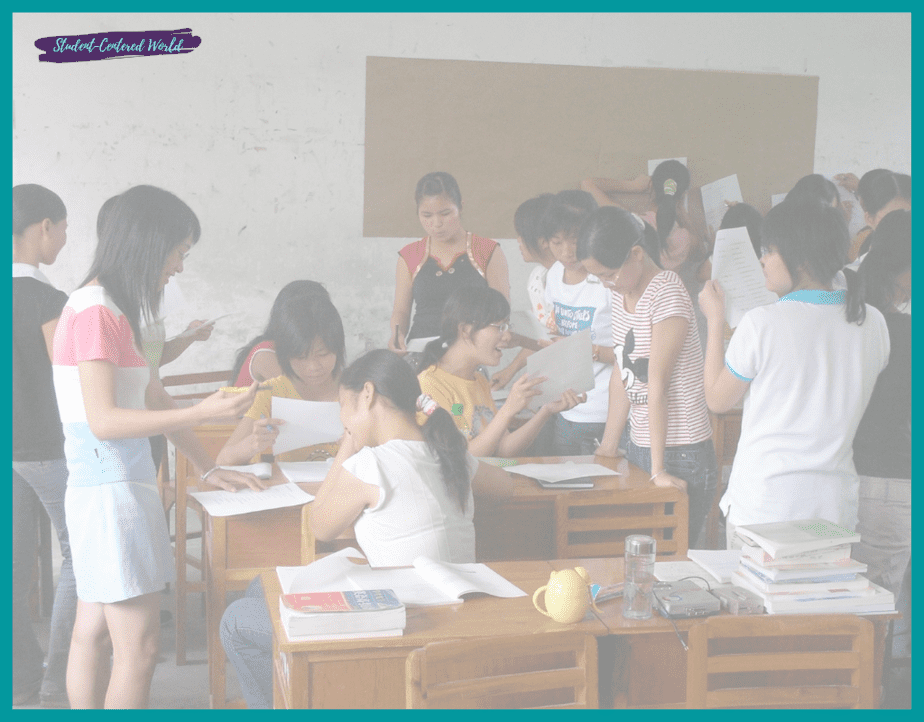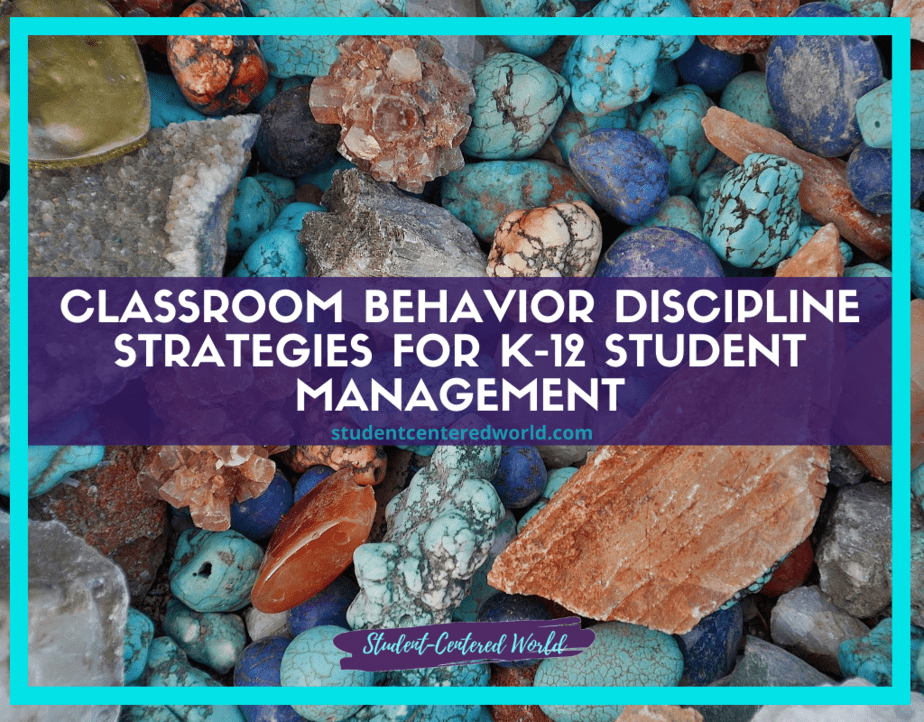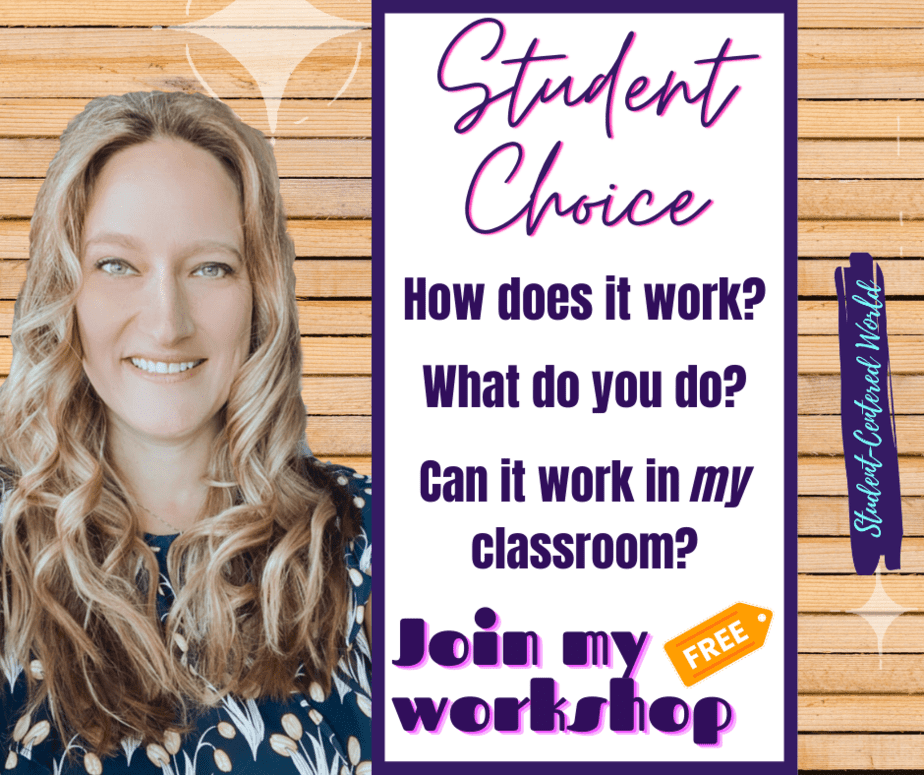Common Classroom Challenges in the Traditional Classroom
A very distinct vision comes to mind when thinking of a traditional classroom in our school districts: the arrangement of the desks, the positioning of the teacher, and the location of the students. However, there are many classroom challenges that are coming to the forefront with this antiquated model of classroom development.
One challenge is the fact that students are forced to sit for an extended period of time. This can be very hard on their bodies, especially considering most students are not moving around much outside the classroom. More importantly, this study shows that movement helps with comprehension and memory retention.
So how do we battle this? One way may be through implementing standing desks. This is because becoming stationary for extended periods of time leads to diminished circulation and cardiovascular health. The easiest way is by allowing flexible seating (and actively advocating for it as a faculty member).
Another challenge that students face in the classroom is the issue of distraction. With laptops, tablets, cell phones, and televisions adjacent, it can be hard for students to focus on what they are supposed to be learning. This study shows that some students do better when stimuli are limited, while others thrive in an environment with some noise and movement.
There are several solutions to this problem
- Limit the use of a mobile device in the classroom.
- Limit the number of screens that can be turned on, or create a designated area for students who cannot focus without them.
- Allow students to regulate their own noise level.
However, an important factor to consider is the fact that every student learns in different ways and is on their own learning path in k-12 education (and honestly, even in higher education). One solution does not fit all; one classroom model does not suit all learning types. Some students learn better when they are active and engaged, while others benefit when listening intently and quietly.
Yet another challenge is the design of the classroom itself. When the push for public education began, we were an industrial society and we’re training our children to be good citizens and workers moving forward. In a time where most employment was in a factory setting, it made sense that schools looked very much like an industrial setting: rows, working on the same assignment in the same way at the same time, etc.

This isn’t how the world around us works anymore (especially since 2019 is our last year of what we remember as “normal”) and therefore isn’t as beneficial for our students. Today, we have a more service-based economy and need people who can think outside the box, communicate effectively, work in teams, etc. – all of which require a student to be able to see from many different angles and think critically about their own perspectives.
Some solutions for this challenge:
- Train teachers better on how to present information to a group that doesn’t work in an identical fashion.
- Allow students the freedom to move around and to choose where they sit/work during any given time period.
In conclusion, there are multiple challenges with the traditional classroom model – ones that make it hard for all students to learn at their highest potential – and there are many solutions that can be implemented to help. However, just as with any problem in this world, the best solution is a combination of many different components working together towards a common goal.
The positive effects of active learning
A great way to counter some of the above challenges in today’s classrooms is by focusing on active learning as a classroom management tool. Active learning involves promoting student-centered learning by students engaging in higher-order thinking and understanding content, focusing on 21st-century skills and student achievement.
For example, if you’re looking at the evolution of dinosaurs into birds, instead of saying: “What do you think caused dinosaurs to evolve into birds?”, ask students to develop their own hypothesis, support it with evidence, and then defend their answer. By allowing the students to be more actively involved in what they are learning, you are allowing them to retain more information and show proof of the concepts they are learning.
The benefits of this easy tweak in content delivery are huge. The students are more engaged in learning, they are looking at things from multiple angles to form their own opinions, and the instructor is able to spend less time answering questions about content that has already been clearly laid out.
Not only does active learning help with discipline issues with our most vulnerable students (i.e., not having all eyes on you), but it is also better for our future – in a world where it’s important to be able to think critically and analyze information, active learning allows students an outlet for these skills.
It can seem daunting at first when trying something new, but most teachers who implement active learning strategies find that they are truly beneficial to all their students – even the most academically inclined ones, and can be easily integrated with your school’s learning management system.
The classroom challenge of class sizes
Another challenge of traditional classrooms relates to the number of students present. It has been shown over and over again that smaller class sizes are more beneficial for student success in terms of academic achievement, fewer discipline problems, etc.
Smaller classes allow teachers more opportunities to interact with students one-on-one or in small groups which can really help students who are struggling or need additional support.
But if smaller class sizes can help improve student success, is there a way we can adjust to make it work when having small class sizes just isn’t possible?
One possible way to address this issue is by implementing learning centers. These are essentially groups of students working collaboratively on projects or activities but have the added benefit of being able to be tailored to specific student needs. So instead of having a group project with all your students, you can have smaller groups doing activities specifically made for them based on ability level.
If you have one student struggling in math, you can have them work with one other student on math problems – something that may not be possible for the teacher to do in front of the entire class.
These learning centers are also beneficial because they allow more students to showcase their abilities, which reinforces self-esteem and boosts confidence.

A similar idea is to focus on small group instruction. While some students may need more one-on-one attention, others thrive when working with a small group of peers. This allows all students to work together on projects or activities that are tailored to their needs.
Small class sizes are beneficial not just for the sake of helping students learn, but also for creating an overall positive learning environment. Smaller class sizes allow for better relationships to form between teachers and students, as well as among the students themselves. While it isn’t always possible, we can find ways to counter it as much as we can.
The first step for new teachers
If you are a current teacher looking to make some changes or thinking about making the transition into teaching, the best thing you can do is try out new things.
While it may seem scary at first or like there isn’t enough time in your day to try something new, this will help you get more comfortable with implementing these strategies in your classroom.
Along with all the wonderful benefits that come from active learning, it’s also a great way to get students more involved and interested in what they are learning. It would be difficult for anyone (even teachers) if someone else was telling them exactly how to think about something.
So how do you jump into this change?
It’s important to start small, with just one or two new strategies that you want to try.
If the first strategy doesn’t quite work out how you wanted it to, don’t worry! Just like anything else, active learning takes practice. The more you play with these strategies and adjust things accordingly is what will help them become more successful.
There are countless resources online to help support you in this journey – whether that’s Pinterest boards that share great activities, websites with tips and tricks, or blogs written by teachers like myself! You can also check out social media for more educational articles and posts from others in the education field.
It’ll be a little bit scary to step out of your comfort zone, but it’ll be worth it in the end.
The most important part is to keep practicing and learning from your mistakes – eventually, you’ll find what works best for you!
Student Learning in a Flipped Course
One area that will show your return quickly is in a flipped classroom.
So many teachers hear the concept of flipping the classroom and they immediately dismiss it: your students would NEVER participate properly with that.
I challenge you to listen because that won’t be the case (and even if it is, if you implement a flipped classroom model in the classroom and troubleshoot before you even engage, there won’t be any issues).
A flipped classroom is when students come to class with some pre-work that’s been assigned.
It could be videos they watched, questions they answered, or activities they completed – all depending on what you’re teaching and how your school views homework.
When students get to class, it’s time for the fun stuff! They engage in fun, interesting activities. Teachers can also use this time to do things like a check in with students about the previous night’s work or quickly touch on something that was requested by a few students.

This is a GREAT way for you to see what they actually know and if anything needs to be re-taught before going into a new unit.
Your students will be able to learn with you when they need it most – outside of class time.
This might not seem like a big change at first, but students will really appreciate having that extra help during the day when they can ask questions and get clarification on information they didn’t quite understand. Other students may love having more choice in their learning – being able to watch an instructional video at home before class or complete a reading assignment during their free time.
The quick change in student engagement because of flipped learning will be apparent almost immediately.
Critical thinking, student engagement, and productive learning environments
Once the students are back in the classroom, you’ll be shocked by the amount of student engagement that’s present.
No longer will they constantly interrupt you because they didn’t understand something; it’s on them to figure out what that is and ask for help/clarification if needed.
The teacher-centered environment (where students are quiet and listening) will become a thing of the past.
You’ll find your students actively engaged in class – asking questions, discussing with other students, and sharing their ideas with others.
They may even complete some activities outside of the allotted time frame!
That’s okay though because they were so excited to finish the rest of the work that they did it on their own time.
The more you implement this strategy, the more your students will engage with their peers and teachers.
In fact, there have been studies that show high school students who are constantly engaged in class do better academically.
Who would’ve thought?
Critical thinking is a HUGE part of student success.
If they aren’t thinking critically, they’ll end up doing a task/activity without thinking about the WHY behind it.
When you challenge your students to think critically about their learning and choices, you’ll see them begin to adopt that into other parts of their life as well.
For some reason, we’ve been programmed to believe critical thinking isn’t something students can do until high school or college, but that’s just not true.
Students can absolutely learn how to be critical thinkers!

In a flipped classroom, your students will be challenged with the task of applying content from their lessons in various ways – whether it’s creating their own daily/weekly schedules, teaching other students about a topic they’re learning, or reaching out to a community member for answers/help.
These activities encourage students to think outside the box and make connections between their own lives and what they’re learning.
Your students will be happier too! Studies have shown happiness is linked to success – so make your class a happy place! Have them complete research projects with their classmates, go on field trips/fieldwork (even if it’s virtual), and get to know your students on a deeper level (assigned seating will get you NOWHERE with this).
Make adjustments that will make your class more accessible to all types of learners.
Some students learn best in a quiet/structured environment while others need active learning activities to keep them engaged.
Flipping your classroom is the perfect opportunity to be flexible with assignments and activities so you can accommodate all types of learners.
If your class is full of students who love hands-on learning, fire up those maker spaces! Have them design their very own robots or even build LEGO cities (with an engineering twist of course) after they’ve completed their regular schoolwork.
Older students who learn best with a little more independence can complete online/virtual assignments.
As long as you tweak your class to suit all types of learners, everyone wins!
Your students’ critical thinking, student engagement, and happiness will increase as well as their success rates.
Instructional videos: A new approach to class time
In the past, movies were utilized after a test or when there was free time. However, with the internet at our disposal, instructional videos have an entirely different purpose in today’s classroom. Now, they’re a valuable resource to use during class time for our Generation Z students.
What’s great about instructional videos is that the teacher can pause the clip and ask students if they have any questions or want to try out what they just saw. If they’re using an individualized platform like EdPuzzle, they can review areas as many times as they need to in order to understand. It gives students a chance for active engagement as opposed to passive learning which does nothing but bore them after a while.
In an age where everything is digital, instructional videos are essentially the same thing as visual slideshows on PowerPoint or Prezi.
However, they might be more effective because it gives students a chance to actually engage with the content rather than just read it on a screen.
Whether you’re looking for supplemental instruction on how to solve math problems or an up-close look at which animals are in your science textbook, instructional videos are a great way for students to engage with the content.
Why it makes sense for them
Not only will they be able to familiarize themselves with new concepts without being overwhelmed but it can also save you time because you won’t have to re-explain the same thing over and over again.
Instructional videos are also great for time management because you don’t have to waste class time describing the same concept over and over again. This is especially beneficial if you have students who learn best by being shown rather than told.
Instead of spending 10 minutes every day reviewing what happened in your previous lesson, you can use instructional videos to quickly review what you taught them.
It’s important to note that instructional videos should not be the primary method of instruction.
While they’re an excellent addition to your school day, they shouldn’t replace your instructions or handouts/assignments.
You want students to have a chance for active engagement so instructional videos are a great addition to your class, not a replacement.
Instructional videos can give students a chance for active engagement and save you time on reviewing what you’ve already taught them.
Plus, it’s free and easy to find on platforms like YouTube!
Embrace innovation and technology to improve the quality of your instruction and provide more different types of learners with the opportunity to learn in your classroom.
It will not only improve academic achievement but also student happiness and engagement!
Student attitude in the physical classroom
Apathy is the word that has been thrown around as of late when it comes to our students. They are exhausted (aren’t we all), but we need to find a way to find some positive attitudes in there so we can get our jobs done, right?
So, how do we make this happen?
We know it is difficult to change student attitudes; what we can do (and the keyword there is “do”) is control our own. It’s about finding a way to make it fun and interesting for you as well as them. We all need to find something that not only gets us out of bed but also working and trying to make today a good one.
If we can’t find anything, we need to change things up.
You know the saying: if you always do what you always did, you will get what you always got. Let’s try something different this time!
Here are some ideas on how to change things up and make it interesting for you too:
• Change the learning environment.
Whether that means sitting on the floor, moving your desk to another room (or if you’re brave enough – outside), or standing at the board; find what works best with your personality and see what happens.
• Get rid of the power struggles.
If the student doesn’t have their uniform on, don’t get mad. If they aren’t prepared for today’s lesson, follow up with them after school or during lunch. You know how much your student cares about your class – if you make it important to you, they will make it important too!
• It takes a village. Find your allies in the school.
For example, if you notice that one of your students has a lot of behavior issues, talk to their teacher or the office about it. This student will most likely make every day miserable for you until someone does something. If it’s interfering with your teaching, there are measures you can take to help this student have a better day – it just takes brainstorming with others in the school to come up with the best plan.
• Find your happy place
Let’s face it – it’s hard to be in a good mood when you’re tired or stressed. If you are having trouble finding that happy place, there are many apps and websites available to you that can help with the meditation process.
• If it’s not working, make a change. You are in control of how your day will go.
You might need to find new strategies for certain situations or even switch rooms if you notice there isn’t enough discipline. Don’t be afraid to ask for help! Nothing changes if nothing changes!
These are just some ideas on how to make things different. Maybe it’s time for you to try something else so you can actually have fun during your day, too?
Change is hard, but if we always do what we’ve done before, nothing will ever change.
No matter the age or the subject matter, the best instruction comes from someone who is passionate about what they are teaching. The physical classroom is still relevant but progressive learning environments allow for students to not only excel academically but also emotionally and physically.
With new technologies at our fingertips, it is easier than ever to give your students an opportunity to be active learners inside and out of the classroom.
Social interactions with team members in group work
One of the greatest gifts we can give our children is the gift of knowing how to collaborate properly and have well-established communication skills. Seriously, if they leave us with nothing else, this part of their learning process will carry on with them throughout their entire lives.
Group work fosters the development of social skills, listening skills, and speaking skills. Of course, there are many ways to accomplish this from a simple group activity where they all work individually on something before presenting their final result to the class; which gives them time to practice their presentation skills with peers rather than in front of the entire classroom.
Free choice
Giving your students a free choice assignment provides them with an opportunity to think outside of the box while allowing for creativity and uniqueness. This type of assignment should be incredibly relevant to their grade level – whether that is a science project, a math problem set, or a creative writing piece.
Allowing students to choose an activity they are interested in isn’t just beneficial for the student, but you as well. You get to learn more about your students by their choice of activity and work with them to achieve their goals.
Simulations
Simulations allow for students to work on a higher level of thinking when completing tasks. Depending on what type of simulation is used, it can promote creativity and critical thinking skills while helping to develop social skills, teamwork, sportsmanship, and the ability to problem-solve.
Here are some types of simulations to consider:
➡️ Role-playing
Have students play the role of someone in a particular situation and act out different outcomes.
Role-playing is great for helping students learn how to deal with scenarios they may face.
For example, if you are teaching them about different types of bullying, have them act out the situation. This will help teach students how to deal with these situations not just during school hours, but outside of school as well.
➡️ Escape Room
When a group of people is “locked” in a room, they must work together to solve the puzzles and riddles to get out. This fosters problem-solving skills while also helping teammates develop important social skills such as communication.
Escape rooms can be customized to meet the grade level and interests of your students. You might think about having an escape room for your students where they must work together to break out of the school.
➡️ Mock Trial
Give your students an opportunity to practice their persuasive skills.
This type of simulation is wonderful for helping students learn how to present their ideas and use critical thinking skills. Not only that, but they will gain confidence in public speaking.
➡️ Business Simulations
This type of simulation works on classroom management, academic work ethic, leadership skills, collaboration skills, time management skills, etc.
It’s important to remember these types of activities are not something you can just add to an existing curriculum and hope it works.
You must be prepared in order for your students to be successful in the classroom, so be sure you take some time to figure out what is best for them and how they will react before implementing this type of activity into your lesson plans.
➡️. Bring learning outside together
The classroom setting is a wonderful thing, but sometimes it’s important for students to get out of the classroom.
How can you do this? By making learning fun and exciting!
You can take your students on an outdoor field trip that will enhance their learning experience or have them create something outside that they can bring into the class to share with their peers.
For example, have your students work on a science experiment in the park outside of school! They can gather different items to study while they are there and create their own hypothesis based on what they find. After they gather all of their findings, have them present their idea to you so you can help them with any questions or concerns they may have.
Another thing you can do is encourage your students to bring in some of their favorite games to show their classmates how they are played! This will give them a chance to play games during the workday while also promoting collaboration between students who may not get along very well outside of school.
Stop Driving the Teacher Struggle Bus
Are you struggling with student engagement, apathy, or keeping your class on track?
💫💫 There’s hope! 💫💫
Join my free teacher workshop “Choosing Choice” and in just 60 minutes, you’ll craft a practical plan to revitalize your teaching. Discover the magic of student choice in boosting engagement, gain quick implementation ideas, and explore strategies for year-long success.
Unlike overwhelming workshops, my approach guides you in real-time, providing more classroom options, reducing stress, and giving you more personal time.
Plus, you’ll earn a 1-hour professional development certificate and have 7 days of access.
Don’t miss this chance to transform your teaching; click below to secure your spot now!






